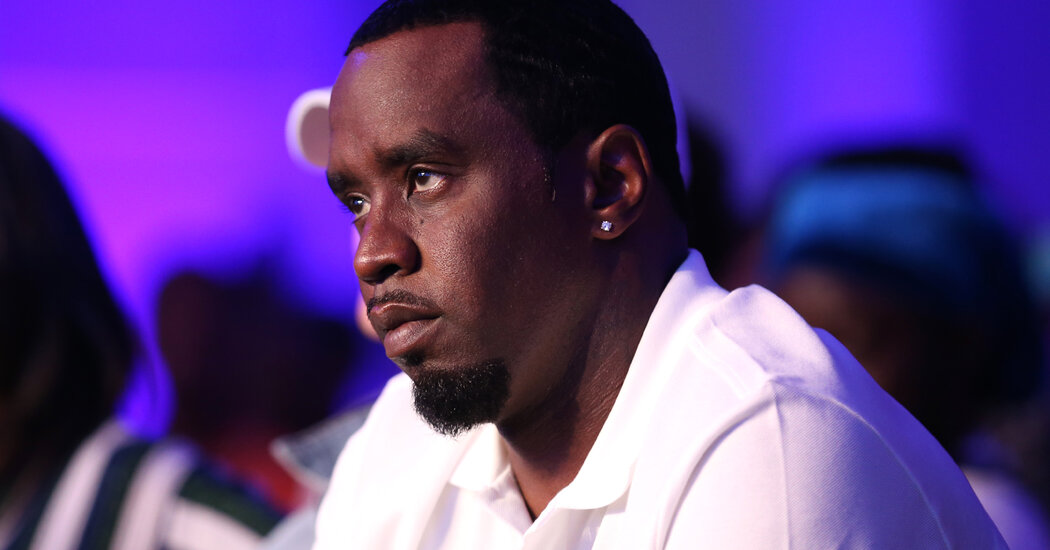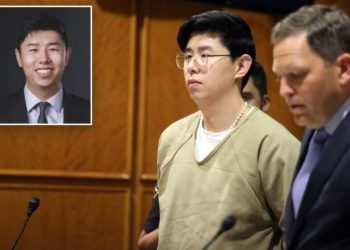A jury in the federal trial of the music mogul Sean Combs began deliberating at about 11:30 a.m. Monday, and soon sent two notes to the judge.
The first, arriving about 10 minutes later, was expected: the panel had selected a foreperson.
In the second note, sent a little over an hour after the jurors began their deliberations, the foreperson reported an issue with one juror, identified as No. 25, “who we are concerned cannot follow your honor’s instructions.”
After about 40 minutes of negotiations among lawyers for both sides over how to respond, the judge, Arun Subramanian, announced shortly after 2 p.m. that he would send a note back to to the jurors, encouraging them to continue deliberating. He said he would remind them to follow his instructions on the law, and instruct the panel to have their foreperson send another note if any further issues arise.
The jury of eight men and four women began its deliberations after receiving legal instructions from Judge Subramanian in the complex sex-trafficking and racketeering conspiracy case.
The panel heard closing arguments from the government prosecutors on Thursday, followed by a presentation by the defense and a final rebuttal from the government on Friday.
Judge Subramanian then opted to send the jurors home for the weekend so they could “come back fresh on Monday morning” to receive his directions. It took the judge about two hours to go over the fine points of the laws at the core of the government’s case, a process known as “charging the jury,” before the jurors could start deliberations.
The anonymous group was not sequestered throughout the trial and spent the weekend at home following the passionate final pleas from both sides last week.
“You’ve heard the closing arguments, but I will ask you to continue to keep an open mind about the case,” Judge Subramanian told jurors on Friday, before adding the standard instructions he has given throughout the trial: “Do not speak with each other about the case. Do not speak with anyone else about the case. Do not read or research or look up anything about the case.”
In its closing argument, the prosecution portrayed Mr. Combs, also known as Diddy or Puff Daddy, as the long-untouchable leader of a criminal enterprise who “used power, violence and fear to get what he wanted,” especially sexually.
The sprawling case presented by prosecutors encompassed two decades of what the government described as criminal behavior, including drug distribution, kidnapping, arson, bribery, sex trafficking, witness tampering and obstruction, interstate transportation for prostitution and forced labor. In its closing argument, the prosecution zeroed in on a few notable examples that it said proved the five counts against him: one count of racketeering, two counts of sex trafficking involving two of his long-term girlfriends, and two counts of transportation to engage in prostitution.
Mr. Combs, 55, faces a sentence that could extend to life in prison if convicted of the most serious charges. He has pleaded not guilty and his lawyers have said that any sex in the case was consensual, as they say was demonstrated in the extensive digital communications entered as evidence.
To convict Mr. Combs of racketeering conspiracy, jurors need to find that he and a co-conspirator worked together to commit at least two instances of criminal acts from the government’s list of examples. Drug distribution alone, the prosecutors argued, was sufficient to convict Mr. Combs of racketeering because they said the trial had shown that he and his employees participated in “hundreds of acts of drug distribution” together.
At the heart of the case is the prosecution’s argument that Mr. Combs coerced two women to have sex with hired escorts while he watched, filmed and masturbated in drug-fueled sessions known as “freak-offs” or “hotel nights.”
The defense has argued that the women — the singer Casandra Ventura, or Cassie, and another girlfriend who testified under the pseudonym “Jane” — were in control of decisions and even enthusiastic about the sexual scenarios. But prosecutors said the sex-trafficking charges could be proven if even one freak-off was achieved by fraud or coercion, including violence, threats or out of financial obligation.
After the formality of the government’s closing argument, the lead lawyer for Mr. Combs presented a more lively and colloquial closing argument in which he said the portrait of Mr. Combs as a criminal mastermind was overblown. With sarcasm that at times elevated to a mocking tone, the lawyer, Marc Agnifilo, attempted to undermine the evidence and testimony connected to what the government had characterized as the kidnappings of a long-term employee and the arson of a romantic rival’s car.
Mr. Agnifilo also worked to reframe the freak-offs as romantic, if nontraditional, “date nights” and the partners who participated in them as women with agency. “No one’s forcing her to do this,” Mr. Agnifilo said of Ms. Ventura. “She’s a woman who actually likes sex — good for her.”
“Take the part out that is inconsistent or not inconsistent with how, you know, many people choose to be intimate, and what you really have left is kind of this beautiful evening,” the defense lawyer added. “I don’t think by any stretch of the imagination this is the only man in America making homemade porn. I’m under the impression that this is a pretty popular thing nowadays. So let’s look at it in the context in which it is in.”
Joe Coscarelli is a culture reporter for The Times who focuses on popular music and a co-host of the Times podcast “Popcast (Deluxe).”
Ben Sisario, a reporter covering music and the music industry, has been writing for The Times for more than 20 years.
The post Combs Jury Tells the Judge One Juror Has an Issue as Deliberations Snag appeared first on New York Times.




